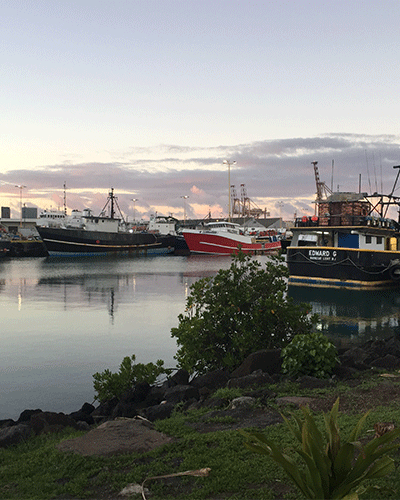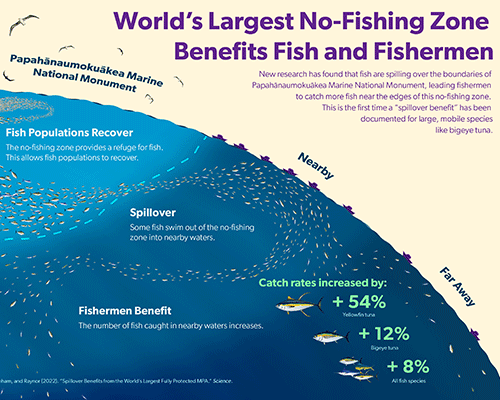Ask U.S. scientists where they would like to publish their research and the likely answer is in the prestigious journal Science. A recent College of Social Sciences doctorate student just made that dream a reality.
Sarah Medoff earned her bachelor’s, master’s and doctoral degrees from UH Mānoa, completing her PhD thesis in Economics in the summer of 2021. Shortly after graduating, Medoff submitted the first chapter of her thesis to Science, with the resulting article published in October 2022.
Using data collected onboard fishing boats by scientific observers, the study found that the world’s largest no-fishing zone, Papahānaumokuākea Marine National Monument, has increased the catch rate of yellowfin tuna by 54% in nearby waters. Catch rates for bigeye tuna increased by 12%; catch rates for all fish species combined increased by 8%.
The research was funded by the National Oceanic and Atmospheric Administration, and the National Science Foundation. The other two study authors are CSS Economics Professor John Lynham and Professor Jennifer Raynor of the University of Wisconsin Madison’s Department of Forest and Wildlife Ecology.
The size of this no-fishing zone – almost four times the land mass of California – and the apparent homing behavior of some tuna species in the region likely played a role in the positive effects observed. Aside from their economic significance, yellowfin tuna and bigeye tuna, also known as ʻahi, have long held a central place in Hawaiʻi’s culture and diet.
Said Medoff, now a researcher at UH Mānoa’s School of Ocean and Earth Science and Technology, “Being born and raised in Hawaiʻi, I know how important ʻahi is to the community here. It’s not just something eaten in fancy sushi restaurants, it’s the focal point of family gatherings, weddings, birthdays, graduation ceremonies and New Year’s Eve parties. It’s reassuring to know that the monument is protecting this resource for my own children and for future generations.”
Papahānaumokuākea was created in 2006 and expanded in 2016 to protect biological and cultural resources, not specifically to generate benefits to the local tuna fishery. The area is considered sacred by Native Hawaiians and the monument is co-managed by Native Hawaiians, the state of Hawaiʻi and federal government.
According to Kekuewa Kikiloi, an associate professor in the UH Mānoa Kamakakūokalani Center for Hawaiian Studies, who was not involved in the study, “This research by Medoff et al. reaffirms the value of large scale marine protected areas in the Pacific. The protections that were fought for by Native Hawaiians and other stakeholders for Papahānaumokuākea serve to benefit everyone, including fishing interests.”

